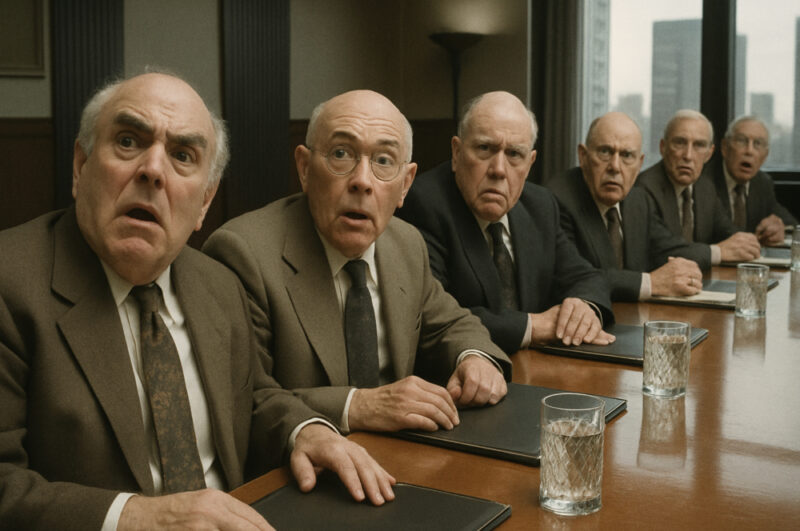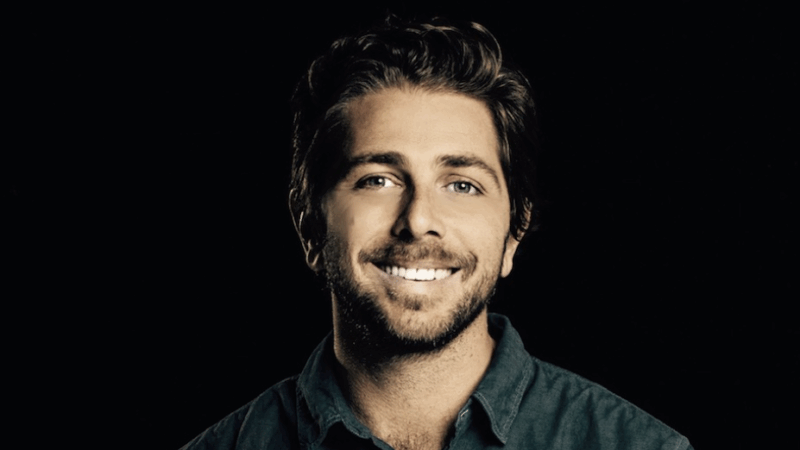
The loneliest place on earth (for a creative)
Ben Coulson has been the chief creative officer at Dentsu, Clemenger, VML, Y&R and George Patterson. Here, he discusses how creatives can no longer just show up with an idea and a theory – they need to bring validation.
For anyone who has ever come up with a creative idea, you’ll know the particularly vulnerable moment that follows – presenting it.

The strat team have pacified the room with the sequential logic of a hundred charts. Now you just have to show them the idea. You stand, channel your best Don Draper, and give it your all.
The room goes quiet. All eyes on your big slide. Then to you. Then the slide again. Where did that logical next step go??
You’ve just presented a damn good idea, with passion and belief.
But not proof.
Belief, passion, and even reputation just aren’t enough anymore.
Clients don’t want to hope that it’ll work, they need to know.
They’re not difficult, they’re being accountable. To the CFO. The board. The CEO who hasn’t been ‘on the journey’.
Creatives and creative agencies too often make the mistake of thinking everyone ‘gets’ ideas like they do. That lateral leaps are normal. Yet, we all know the look when we have just lost the client, who moments ago was right there with you.
Even if you do light a spark in them, chances are they’ll have a bunch of stakeholders to convince, without you in the room to help.
So don’t just show up with an idea and an opinion, bring validation.
I’m talking about the most feared word in our world. Research.
I know, we’ve all had reason to head but the desk when research gets involved. Historically, it’s where original ideas are taken out back and shot. The firing squad for new or different thoughts.
But what if we took control of it, and used it to improve creative outcomes, not stymie them?
Why leave it up to often antiquated research, done without your input and after the creation process. Often asking the wrong questions and listening to the wrong answers?
Done right, research can be a dialogue with your customer. A conversation that discovers what’s engaging about your hunch.
Not so long ago creatives would loiter in cafes and on buses to observe people, find out what they were thinking and doing. I worked in pubs for that reason, to listen and learn.
Often I’d test ideas, see what people thought while the idea was fresh and there was time to play with it a bit. More than once, someone three pints down and without the stress of my deadline would uncover the magic.
Tech and some positive changes to research have made this possible in a whole new way.
It’s now possible to bring pretty robust research with you when you present an idea. You can show how customers contributed to and confirmed this as the right idea.
This is building with the audience from the start.
Not testing to kill, but testing to sharpen.
It creates confidence in the work.
Recently, I’ve been taking a proactive position on research, using it to develop ideas. New methods and new platforms are allowing this. Getting an accurate and affordable read from 1,000 people, in an hour, while they are on their commute home, is now possible.
In my last few presentations with Dentsu, we tested and adjusted throughout creative development. On the day, we had confidence in what we presented. We knew how it worked and why.
This allowed us to present braver work, because we could show how and why the idrea had the customer on board.
This method allowed us to bring customers into the process before the pitch, not after the pre-prod. With evidence. With insight. With actual humans.
Creating with the customer is exciting because it puts insight in service of creativity, not in opposition to it. It makes feedback continuous, not episodic. And it brings creative and strategy teams into the process, not just the client.
There are so many reasons right now for creatives to feel threatened, but there are also many technologies and platforms that are helping creativity move faster and be smarter.
Recently I’ve been working with Ideally, a new school research platform that allows you to create with real feedback, fast. It’s not about making safer ideas, but making them stick.
Without wading too deep into the AI jobs debate, platforms like Soffiah.ai offer an interesting model for getting the best from multiple AI platforms.
Cuttable is doing smart things to help with scale and deployment. Springboards.ai is like a strategist who never sleeps. Tracksuit is killing it in the brand tracking space. And there are more startups hitting the market every other week.
Instead of being defensive you can start by using them playfully, curiously and deliberately as a shortcut to the end goal. See them as an opportunity to get better ideas, better execution, better deployment and they are less threatening.
Commercial creativity, when it works, is a conversation, not a monologue. It’s a back-and-forth with your client, and most importantly, with their customer.
Presenting doesn’t have to be the loneliest place on earth, just bring the confidence of knowing what the customer really thinks.




A distinct lack of examples here. Ben started at a time when creativity was held sacrosanct within agency, when no suit or MD could challenge the CD’s choice of work. And occasionally, that Cannes-junket-worthy choice would strike a hit in the market.
But the ‘truly creative’ solution has never proven a guaranteed success in the real world. To reiterate; there is no direct correlation between creativity and efficacy when all ‘truly creative’ (i.e. award-winning) executions in the history of advertising are taken into account. Some hit, and others miss.
So now here is an article about tinkering at the edges, when AI obliterates the notion that creativity is a rare gift held by a precious few. Meanwhile, effective marketing is increasingly tied in to understanding how to ride and game the algorithm, a far more assured gamble than ‘true creativity’.
The premise of this article cannot be taken seriously without direct proof that this tinkering does anything other than convince the client to go with a Cannes junket opportunity. Evidence please Ben.
That comment can prove that brutality and the truth aren’t mutually exclusive.
The creative strategy originally presented typically is nothing like the final creative strategy, which is essentially becomes the sell job for what the egotistical ECD thinks is a great idea.
Facts, figures and observations are often sought retrospectively to support the ‘great idea’.
It’s good to hear creatives are being held more accountable.
Poor creatives. Imagine if you had to work in media where you need 10 different sources listed for each statement you make on every slide.
Creative strategy is nothing but someone’s thoughts on a page with a loose insight based on the strategists own bias and ‘lived experience, most times without any meaningful data to support it.
It’s late and ive had a few. So a bit loose. But this a thoughtful piece and thanks. Whether you’re a mechanic or rocket scientist survival depends on keeping an open mind. following on for your Don Draper reference the greatest thing he ever said was that advertising creative are not artists they are problem solvers. It’s important to keep your head out of your arse. Save art for the pub or your garage studio.
@Anonymous that’s the biggest piece of bullshit I’ve heard in a long time. Perhaps in a few antiquated spots within the creative agency landscape, creative strategy is just “a thought on a page” but in most agencies there is rigour – marketing science, behavioural science, consumer research – etc behind what is presented. Like in media, clients demand it (and so they should).